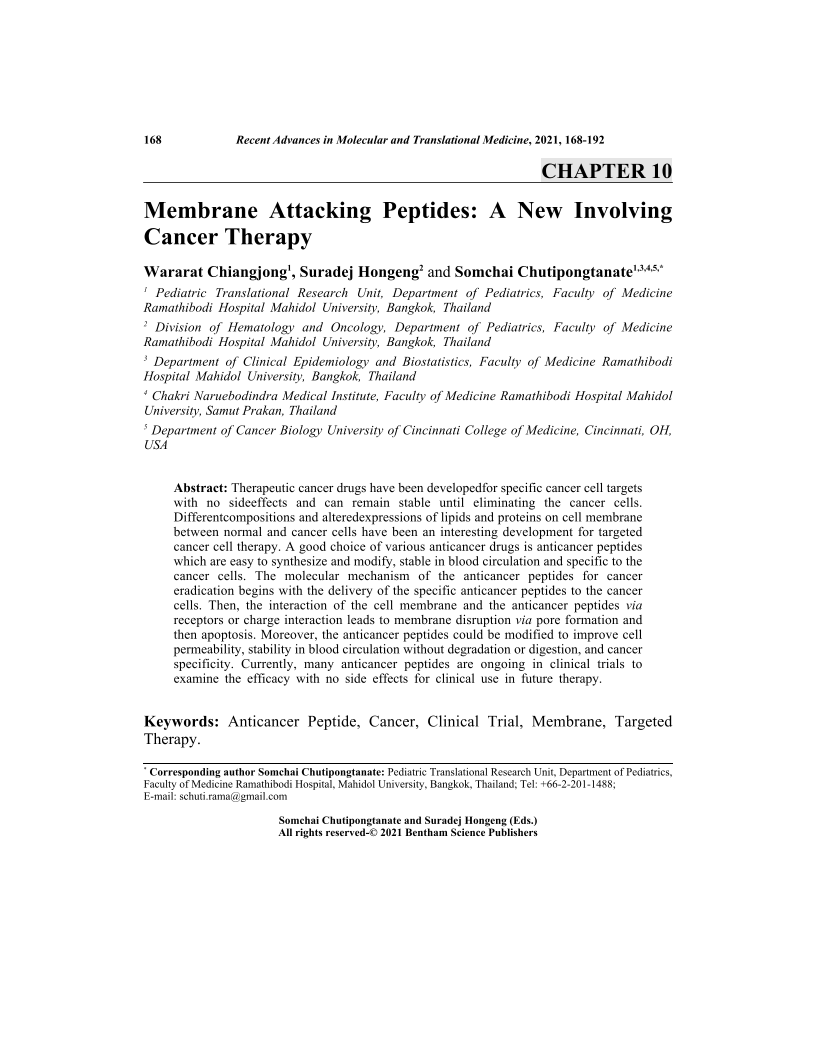Membrane Attacking Peptides: A New Involving Cancer Therapy

- Authors: Wararat Chiangjong1, Suradej Hongeng2, Somchai Chutipongtanate3
-
View Affiliations Hide Affiliations1 Pediatric Translational Research Unit, Department of Pediatrics, Faculty of Medicine Ramathibodi Hospital Mahidol University, Bangkok, Thailand 2 Division of Hematology and Oncology, Department of Pediatrics, Faculty of Medicine Ramathibodi Hospital Mahidol University, Bangkok, Thailand 3 Pediatric Translational Research Unit, Department of Pediatrics, Faculty of Medicine Ramathibodi Hospital Mahidol University, Bangkok, Thailand
- Source: Recent Advances in Molecular and Translational Medicine: Updates in Precision Medicine , pp 168-192
- Publication Date: December 2021
- Language: English
Membrane Attacking Peptides: A New Involving Cancer Therapy, Page 1 of 1
< Previous page | Next page > /docserver/preview/fulltext/9789815036756/chapter-10-1.gif
Therapeutic cancer drugs have been developedfor specific cancer cell targets with no sideeffects and can remain stable until eliminating the cancer cells. Differentcompositions and alteredexpressions of lipids and proteins on cell membrane between normal and cancer cells have been an interesting development for targeted cancer cell therapy. A good choice of various anticancer drugs is anticancer peptides which are easy to synthesize and modify, stable in blood circulation and specific to the cancer cells. The molecular mechanism of the anticancer peptides for cancer eradication begins with the delivery of the specific anticancer peptides to the cancer cells. Then, the interaction of the cell membrane and the anticancer peptides via receptors or charge interaction leads to membrane disruption via pore formation and then apoptosis. Moreover, the anticancer peptides could be modified to improve cell permeability, stability in blood circulation without degradation or digestion, and cancer specificity. Currently, many anticancer peptides are ongoing in clinical trials to examine the efficacy with no side effects for clinical use in future therapy.
-
From This Site
/content/books/9789815036756.chapter-10dcterms_subject,pub_keyword-contentType:Journal -contentType:Figure -contentType:Table -contentType:SupplementaryData105

